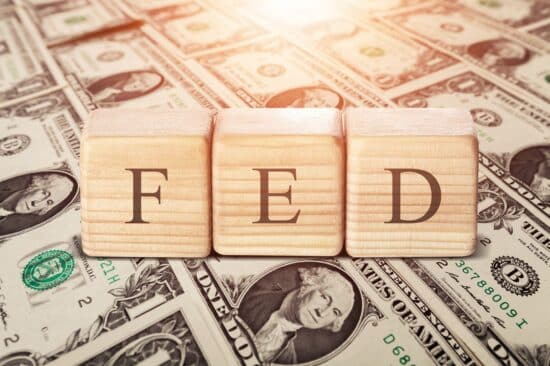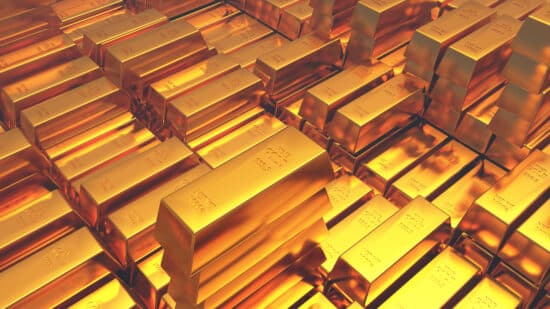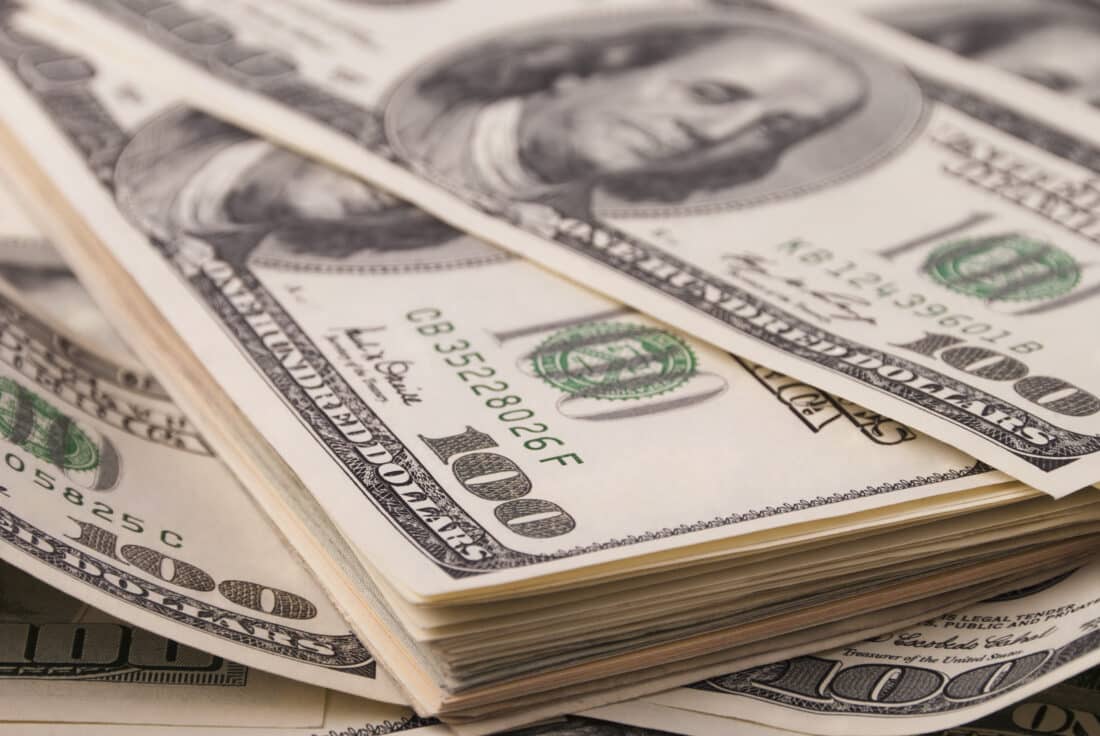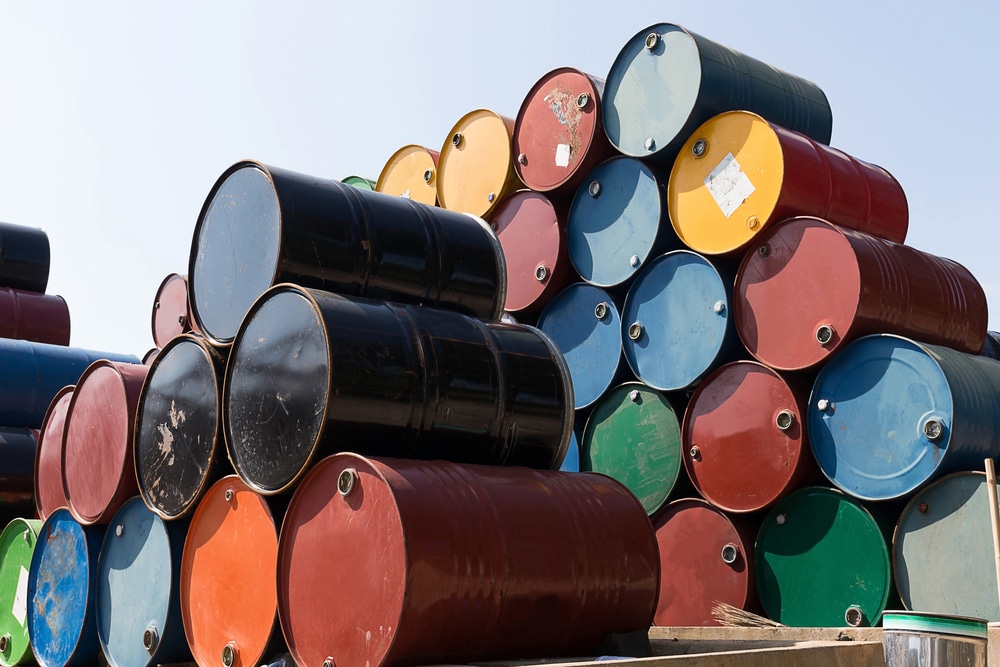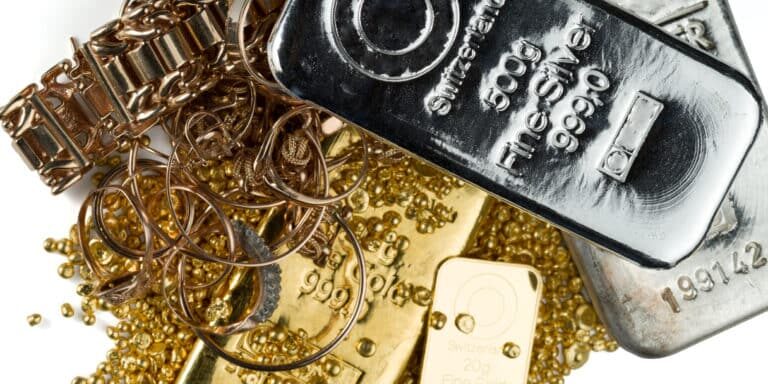
What are the 9 Types of Precious Metals? (Full List)
Talk of precious metals is often limited to gold and silver, as indeed these are the two most famous and important valuable metals. However, there are more than just two precious metals, in fact, eight separate chemical elements can be put into this category. You might have heard of the noble metals, a group of elements resistant to all forms of chemical reactions. There are many precious metals from the group of noble metals, however, they are not the same thing.
The eight noble metals are ruthenium, rhodium, palladium, silver, osmium, iridium, platinum, and gold. Of this list, the majority can be considered a highly valuable material, and therefore a precious metal. For a substance to qualify as a precious metal, it needs to have a high economic value. This is usually because the metal was used as currency, has special characteristics, or simply down to rarity. While all metals are useful in some form or another, precious metals must have a high intrinsic value which makes them ideal for investment.
People have always held gold and other precious metals for wealth protection, as a status symbol and a show of power. Some other precious metals work well in this regard, as they can effectively store value and offer a good future investment. On the other hand, other metals that are considered precious might not be a good investment material. We’re going to share our full precious metals list explaining the investment possibilities for each.
Precious Metals List
While you may know all of these precious metals names, most people can’t explain why each of them is valuable. We’re going to break down every precious metal on the planet, starting with the four investible metals that make a great bullion purchase! These precious metals, unlike the other four uninvestable metals, are ideal purchases to pad out your portfolio. Additionally, owning these metals gives a lot of great benefits including wealth protection.
Investible Precious Metals
The first four precious metals we’ll provide an insight into are gold, silver, platinum, and palladium. These are the elements you’re most likely to hear about as a valuable investment asset, as well as common materials to make luxury jewelry and accessories. Each of these elements is a member of the noble metals, a chemically unreactive family of metals which have very important purposes. Let’s find out a bit more about each of these precious metals, and the characteristics which make them so special.

Gold has long been one of the most sought after investments.
1. Gold
Gold is the most popular precious metal, and it’s valuable for so many reasons. This metal was the first to be used as a currency, as pieces of gold could be used as a universal bargaining chip before the first money was invented. Gold has the chemical symbol Au and atomic number 79. This relatively high atomic number is the reason gold is one of the densest metals known to man, which gives it a number of useful properties.
As a noble metal, gold is completely unreactive to chemical substances. It cannot tarnish or corrode, pure gold is virtually indestructible. Only certain combinations of acids can damage this otherwise incredibly durable material. Gold is used in many industries including medicine, dentistry, and consumer electronics because it is so durable. Delicate vital components are made using this precious metal because we know it is a reliable material. Another reason gold is used in the medical field is that it has antibacterial properties.
One reason gold has been held in high regard for so long is its aesthetic appearance. This shiny yellow metal makes for incredibly attractive adornments, and because of the material’s durability, these decorations will last for generations. Gold is a long-lasting investment because whether you buy a solid bar or a necklace, this tangible asset can be passed down through the years and remain a valuable item throughout.
Gold is a naturally occurring substance, created by the movement of tectonic plates thousands of years ago. This metal has been globally mined for centuries, so most of the world’s supply is already above ground. The concentration of gold still in the earth’s crust is estimated at around 0.005 parts per million. The primary countries where gold is still mined include South Africa, China, Australia, the United States, and Russia.
2. Silver
Silver, chemical symbol Ag, closely follows gold as the most popular precious metal. The history of silver is as rich and important to our development as that of gold. Silver has just as many vital industrial uses and was also a huge player in the early stages of universal currency. This shiny, white, lustrous metal has a number of very useful qualities, in fact, it’s vital to the life we are accustomed to.
Sterling 925 Silver is used to make all kinds of jewelry, and this metal is also used to make flatware (silverware), solar panels, electrical contacts, and even medical instruments. Silver has the highest electrical and thermal conductivity known to man, but copper and gold are used much more in electronics. That’s because even though silver is unreactive in some ways, it’s highly susceptible to a chemical reaction called oxidation. This leads to discoloration and damage called tarnishing, which means silver is much less durable than other precious metals.
There are still many characteristics that make this soft and ductile metal valuable. Alongside gold, silver coins were some of the first currency, and this metal still plays a role in our economy today. That’s why silver bullion is such an excellent investment, for many of the same reasons as gold. However, many influences mean these two precious metals don’t work in the same way, and they aren’t the same investment. Check out our article on the differences between gold and silver to find out exactly what investors need to know.
While silver can be mined in its native form, most of the metal produced today is a by-product of the refining process of other metals. Peru is the current world leader in silver mining, alongside Chile, Mexico, and China. While not as rare as gold, the silver supply is becoming scarce as more of the metal is used in industry. Some people think that as the gold to silver ratio comes more into balance, silver prices could shoot far beyond what we’ve seen before.
3. Platinum
Platinum is a precious metal 15 times less common than gold and was always priced higher than the yellow metal. This rare metal was considered more valuable because of its use in the automotive industry, which made up just under 50% of the total market. Platinum was used to make catalytic converters in diesel cars, but it was discovered that palladium worked better. Platinum lost out to the other precious metal and became less valuable than gold.
Even so, the name of this noble metal still carries a level of prestige and is the namesake of the platinum-group metals. Platinum is still a valuable substance with many fantastic properties. This metal is highly malleable, non-corrosive, and dense, used in lab equipment and to make luxury jewelry. Platinum is also an investable metal and can be purchased in the form of bullion coins and bars.
Only a small percentage of platinum produced is available for investment purposes. This creates a huge demand for the metal, even when it’s only from small circles, and pushes the spot price through the roof. Although it’s now worth less by the gram than gold, platinum peaked in 2008 at a huge $2000 an ounce. This precious metal actually behaves in the opposite manner to gold, rising in value during times of economic prosperity. Unfortunately, our modern-day brings much uncertainty, which might make platinum a more shaky investment for the time being.
Platinum is mined primarily in South Africa, where about three-quarters of the world’s total reserves lie. Miner strikes are common, and lead to an increase in the price of platinum; the markets are easily affected. Although the use of platinum in catalytic converters has gone down, the demand in other areas is rising. Platinum is a precious metal we can see surprising us in the future.
4. Palladium
Palladium is a member of the platinum-group metals, a family of precious metals grouped together because of their similar chemical properties (like the noble metals). Palladium has the lowest melting point of all PGMs, and it’s the only element from this group we’d consider an investable precious metal. Palladium is rarer and more valuable than gold, silver, and platinum.
One of palladium’s special qualities is that it can absorb huge quantities of hydrogen at room temperature. This makes it incredibly useful in many areas of scientific research. Russia, the United States, and Canada are the main producers of palladium. Most of this metal goes to industrial uses, but some is minted into coins and bars for investment. The U.S. Mint recently released the American Palladium Eagle.
5. Non-Investable Precious Metals
Now we’re going to share our precious metals list with the elements not available for purchase by investors. While these metals are just as valuable and rare as the other precious metals we’ve listed, for various reasons you can’t buy them in bullion form. The following metals are some of the rarest elements on earth, with some of the most valuable special characteristics.
6. Ruthenium
Ruthenium is another PGM but it’s not as well known as the elements previously listed. This metal is most commonly used to create palladium or platinum alloys, as it can increase the hardness and durability. Additionally, ruthenium is used to plate electrical contacts because this rare metal will not tarnish at room temperature. It will oxidize at a temperature above 800 degrees Celsius.
Ruthenium is usually found as a minor component of platinum ores, so South Africa is the main producer. There are also mines in South America and small quantities have been found in Canada. Around 30 tonnes of this PGM are mined every year, much as a by product of nickel and copper processing as well as platinum.
7. Rhodium
Currently priced at $12,400 US per ounce, Rhodium is the most expensive precious metal. It’s highly reflective and resistant to corrosion; rhodium is actually used to plate white gold jewelry and give it that extra shine. This corrosion-resistant material is used in catalytic converters, as well as iridium and platinum alloys. The largest producers of rhodium are Russia and South Africa. The world’s production of this rare and valuable metal is only about 16 tonnes a year.
8. Iridium
While Rhodium is the most expensive metal, it’s not actually the rarest PGM. The global annual production of iridium is just three tonnes. Iridium is the most corrosion-resistant metal ever discovered, and almost the densest. It’s very difficult to work with because of its hardness, but this makes it a great material for creating alloys. This by-product of nickel is produced primarily in Russia and South Africa, alongside all other PGMs. However, given its scarcity, this metal makes up a tiny proportion of the total mining operations.
9. Osmium
Osmium is the densest metal on earth and has the highest melting point of all the precious metals. This silvery-blue PGM is hard and brittle, making it difficult to work with. However, there are plenty of industrial applications of osmium, such as the production of electrical contacts. The largest producers of this precious metal are North and South America, where it’s found mostly in platinum ores.
Are All Precious Metals Used For Currency?
Gold and silver were long ago used as currency before paper fiat money came about. However, while many gold and silver coins are technically recognized as legal tender, we don’t use precious metals for money anymore. Not all the precious metals on this list are even made into bullion; there are only a few materials that are as great investment material as gold and silver.
The types of metals used for currency are quite different from the ones on this list. Here we’ve written about some of the rarest and most valuable substances on earth, so it just wouldn’t make sense to use them as everyday items. Precious metals are reserved for the most important of purposes, whether it’s a piece of luxury jewelry or a life-saving medical device. Coins we use each day aren’t worth the expensive materials.
Copper, nickel, and zinc are all types of metals used for currency. These are base metals which are abundant underneath the earth’s crust and can be used for everyday money. These metals are useful in just as many ways as precious metals are, but they don’t have the rarity which drives up the price. In addition, the value of gold and silver is culturally ingrained into our society in a way that no other metals could be.

Silver has always been a great alternative investment to gold.
What Makes a Metal Precious?
There are three traits an element needs to fulfill before it can be considered a precious metal. Firstly, it must be a naturally occurring element. This metal must be formed under the earth’s crust, not in a laboratory by fusing other elements. Metal may need to be refined from other materials into its purest state, but all precious metals must exist naturally.
Rarity is also a defining trait of a precious metal. Some elements are common all over the world, and far too easy to find to be considered precious. For a metal to quality, the amounts found in the ground must be small. Aluminum was once considered a precious metal because it was difficult to refine, and therefore rare. However, modern advances have made the process much easier and this metal is now abundant.
The final defining aspect of a precious metal is that it must be valuable, desirable, and cost a lot of money. If a metal doesn’t have characteristics of special features that make people want it, it cannot be a precious metal. We can see that a substance being rare doesn’t automatically mean that it’s expensive, but a naturally occurring element which is both is a precious metal.
How Rare Are Precious Metals?
The rarity of an element is measured by looking at the proportion of the earth’s crust it takes up. There are huge amounts of all sorts of rare elements, including gold and silver, deeper into the earth’s mantle and towards the core, but these are completely inaccessible to our mining technologies. For the moment, the total amounts of available precious metals can be written as how many kilograms of that material can be found in a billion kilograms of the earth’s crust.
- Gold: 4 parts per billion
- Silver: 75 parts per billion
- Platinum: 5 parts per billion
- Osmium: 1.5 parts per billion
The other platinum group metals have concentrations of less than one part per billion, so you can see just how rare these elements are. In comparison, copper is found at around 67 parts per million, so you can see why it’s much less valuable. Although base metals have many useful functions, they don’t have the rarity to drive up the price. The best investment metals remain the rarest and best established as valued assets; silver and gold.
sign up for the newsletter
By signing up, you agree to our Privacy Policy and Terms of Use, and agree to receive content that may sometimes include advertisements. You may opt out at any time.





